Ávila - Tuesday, July 10, 2007
Home of serious Conversos
During the afternoon, the traffic from Valladolid to Madrid seemed light. However when we got off the main highway and headed almost due south along a two-lane country road, on the last, half-hour, leg of our trip for the day, toward Ávila, we saw less than ten vehicles going in either direction. We passed some fairly modern light industry at the northern approach to the city and then saw the medieval wall with its turrets. Our guidebooks indicated that there was some kind of camp site not far away. However, when we asked at a gas station at the southern end of town (fifteen minutes after our approach) we were told that the closest site was 45 minutes further south over the mountains toward Toledo. In the vain hope that we’d find something else (perhaps a quiet space along the road for free camping) we headed up the road, through lots of new housing developments, but soon turned around. We had seen a Parador in the walled portion of the town and decided that this was our opportunity to experience a special aspect of Spanish travel.
A Paramour at a Parador
On our previous trip in the van (in Europe, March through May 2006) we had slept in the van every night except in Speyer and Hameln, when our local “hosts” insisted that we avail ourselves of their wonderful hospitality. This time, we had a similar experience in Toulouse, staying in the home of a lovely couple to whom we had been introduced by friends in San Diego. However, except for the night(s) before picking up the van and (as the previous year) returning it, we never stayed in a hotel room. As reported elsewhere we had seen a number of synagogues that had been transformed into hotels. Now we would stay in a former castle. We had a room on the street side of the building, a bit beyond the tower entrance visible in the following photograph.
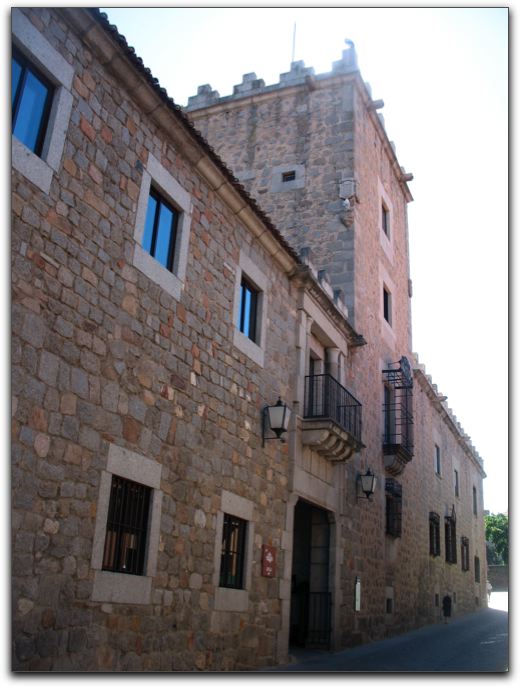
As the sun set, from our room, we could see the storks make themselves comfortable on the top of that tower
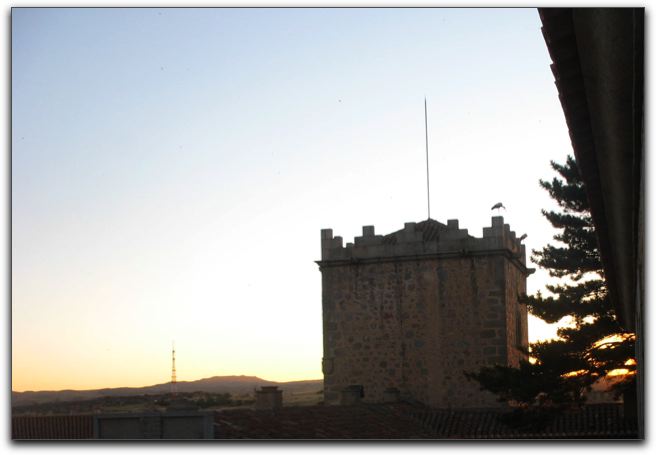
and what seemed to be an old belfry along the western edge of the medieval wall.

After glorious baths, sleep and breakfast consisting of a wonderful variety of cheeses, fruits, breads and eggs (meats available for those who eat them), we set out on our exploration of the city.
(A couple more views of the Parador and its grounds; these from the medieval wall itself: our room was on the far side of the tower, the hall where we ate breakfast is inside the doors behind the umbrellas.)
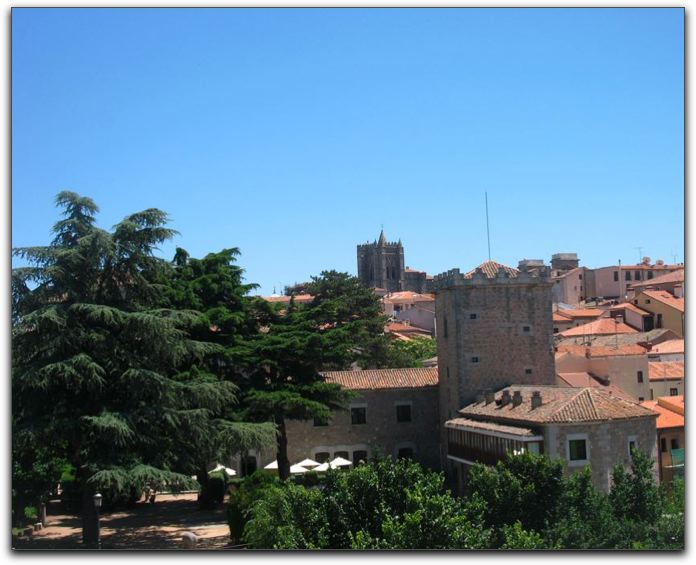

Exploring the medieval town
There were a few things we wanted to find in Ávila. We knew that of its status as a World Heritage Site because of its association with Saint Theresa and also, though secondarily, because of Torquemada. Its medieval walls are among the most complete of any of the medieval cities we’ve visited (perhaps as complete as those of Carcassonne). We hoped to learn about its chocolate and also to find any remnants of the Jewish experience in the city.
World Heritage City
Just in case you weren’t certain, there’s a sign in town:
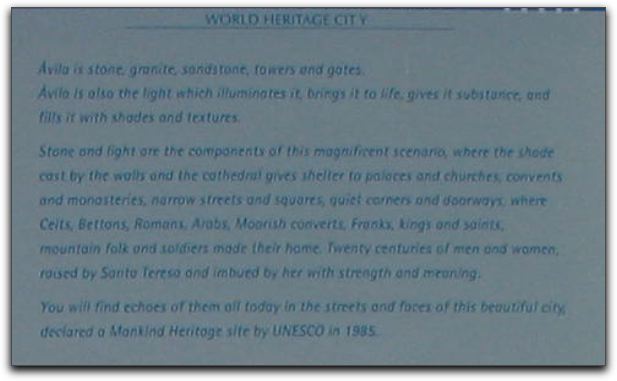
Ávila is stone, granite, sandstone, towers and gates
Ávila is also the light which illuminates it, brings it to life, gives it substance, and fils it with shades and textures.
Stone and light are the components of this magnificent scenario, where the shade cast by the walls and the cathedral gives shelter to palaces and churches, convents and monasteries, narrow streets and squares, quiet corners and doorways, where Celts, Bettons, Romans, Arabs, Moorish converts, Franks, kings and saints, mountain folk and soldiers made their home. Twenty centuries of men and women raised by Santa Teresa and imbued by her with strength and meaning.
You will find echoes of them all today in the streets and faces of this beautiful city, declared a Mankind Heritage site by UNESCO in 1985.
We weren’t familiar with the Bettons before coming to Ávila. Mark did not know they were so important. We were a bit surprised not to see Jews mentioned. The sign gives a lot of anticipatory power to Teresa. She raised 15 centuries of men and women before she was born.
The cathedral is along the east wall of the city. The main vehicle gate to the city enters beside the cathedral. Near the southeast corner, outside the wall is a large, fairly modern, plaza with a Burger King and a variety of banking and souvenir shopping opportunities. Facing in towards the city is this gate. Mark was struck by the hundreds of birds (he was told are called pajaros, but that simply means “song birds”) that continuously circled all the gates (that’s why you see the turrets and not the passageway).
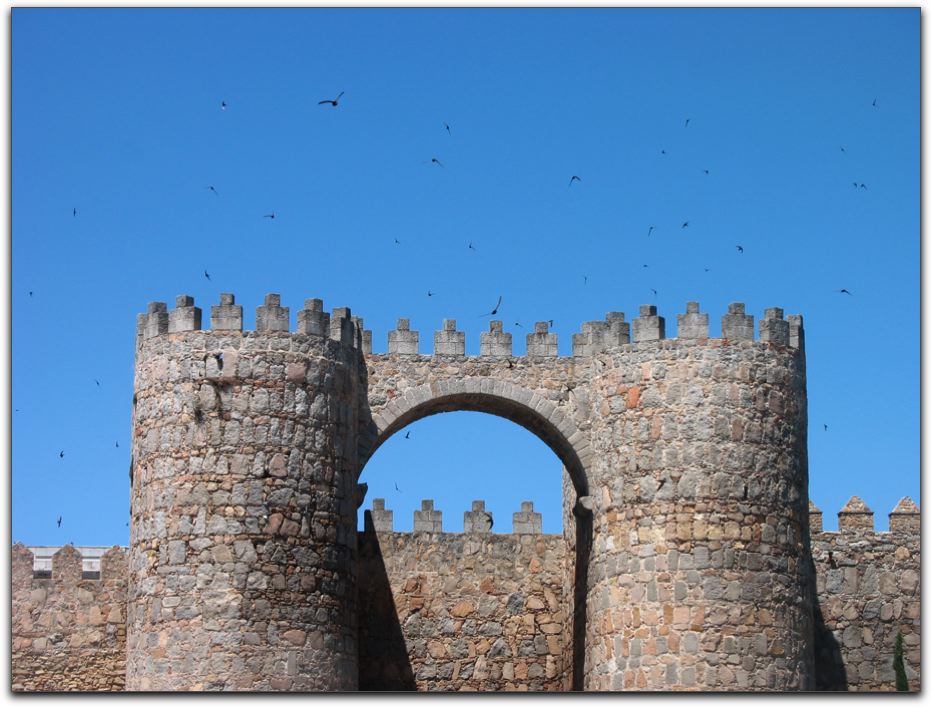
Directly inside this gate is a ticket booth to climb the stairs
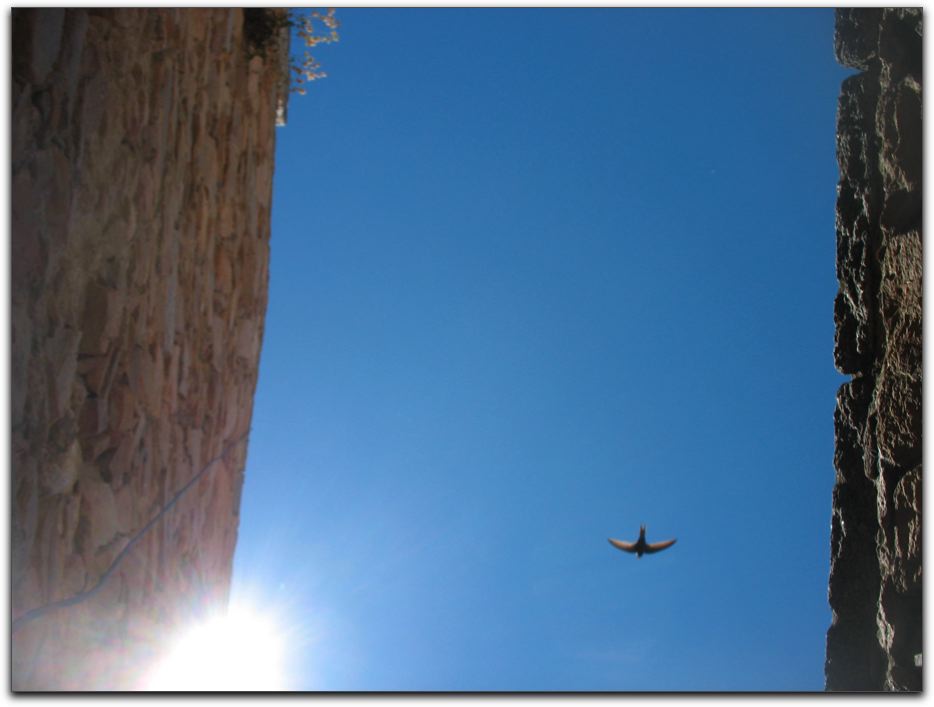
and walk the walls of the city.
Jewish space
Less than fifty meters from this gate, off one of the main roads in the walled section of the city, down a tiny alley is the Hospederia la Sinagoga (looking in and looking out)
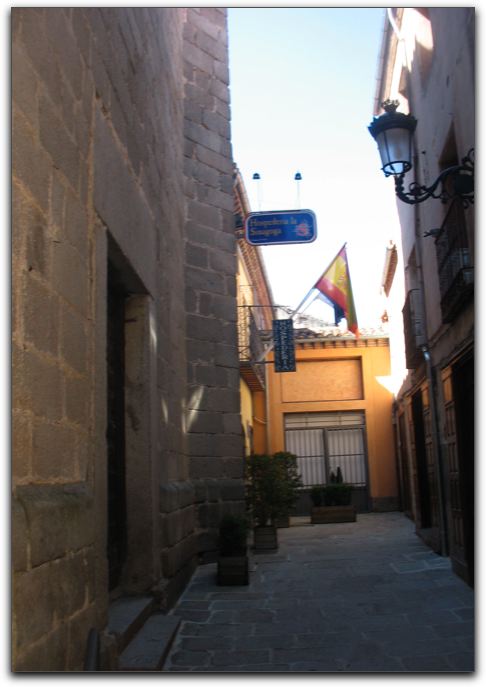
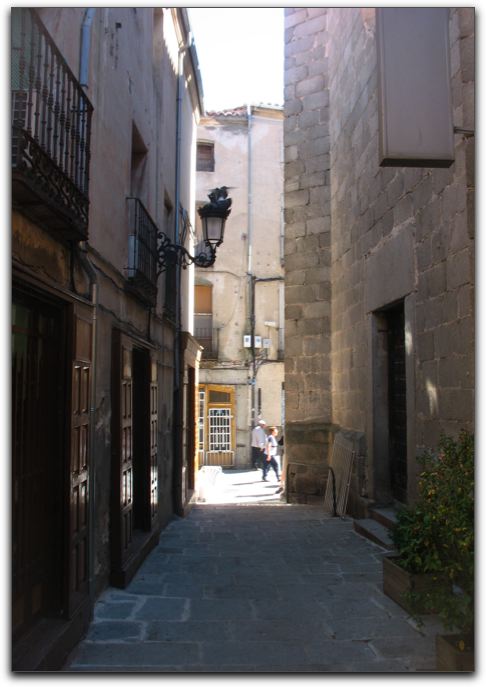
As you enter, the menorah on the wall opposite is the only hint that this might, at one time, have been a Jewish building.
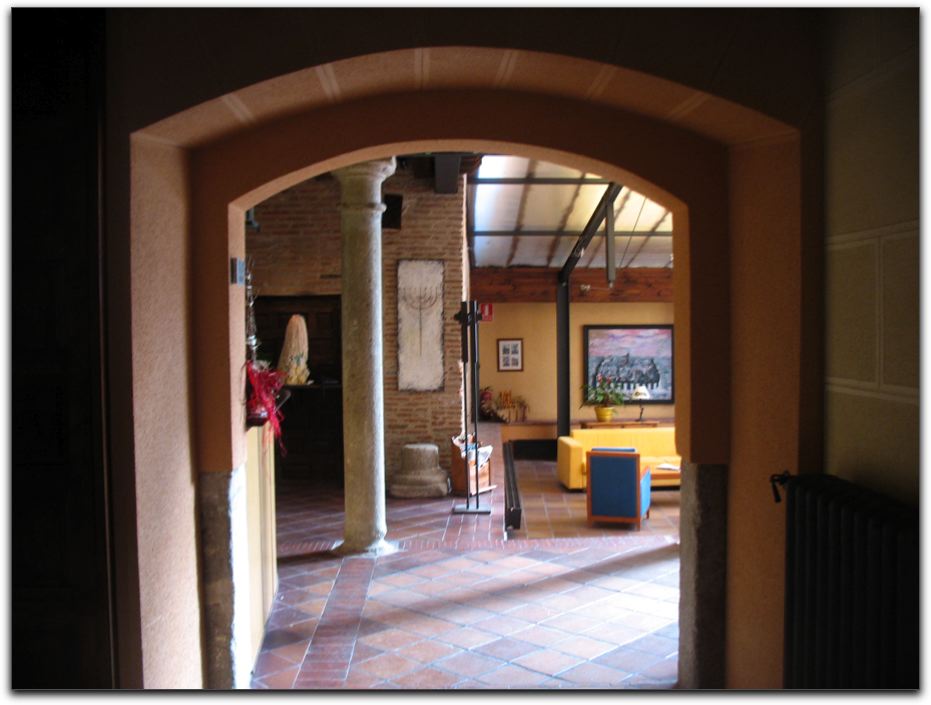
The staff of the hotel has a brochure describing certain aspects of its Jewish past. As you enter the lobby, a lovely airy room with a sofa that strongly resembles the one Mark’s parents had in their home,
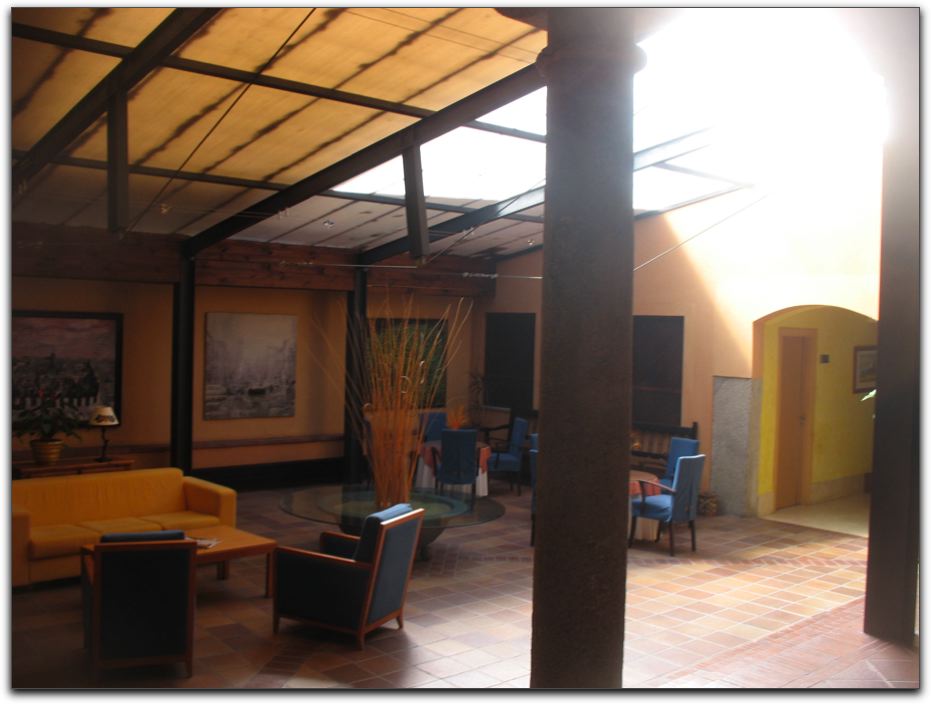
to your right is a “window” making visible what seems to be an old stairway
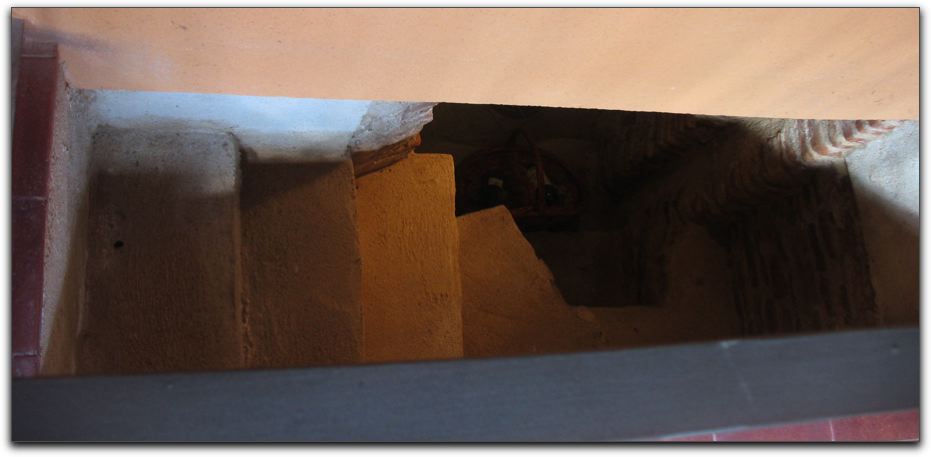
to a basement room, now used as the dining room.
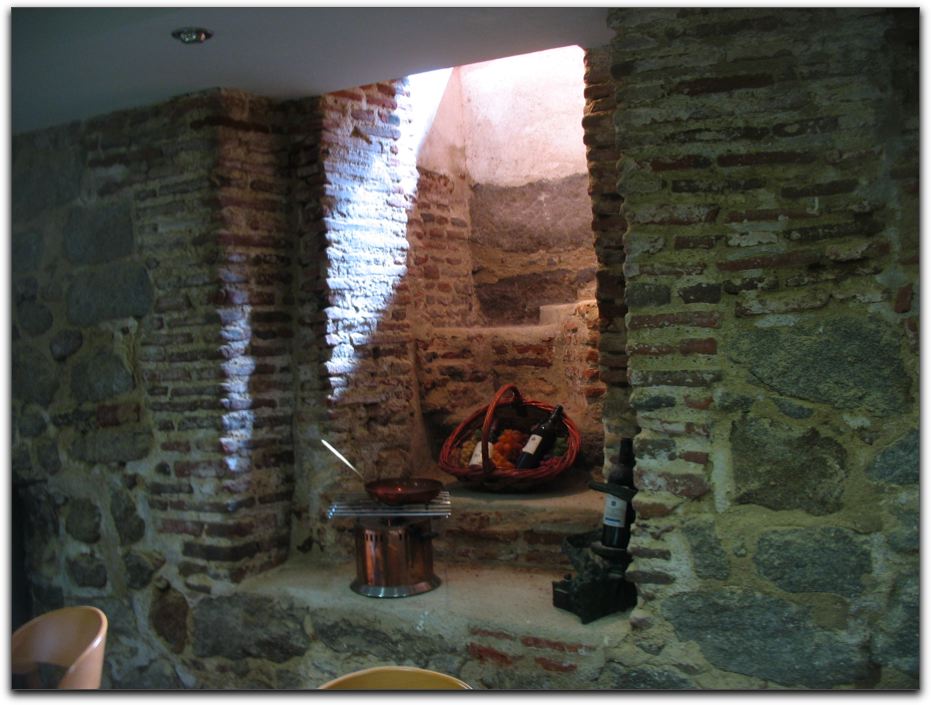
Jewish pasts: Teresa…
We’re sure various studies of conversos and their descendants have been done, in this instance, in relation to the city of Ávila itself, what role they played in the city itself is surely beyond proportion to their number in society.
Approximately fifty meters into the city, beyond the synagogue hotel is a complex of buildings related to St. Teresa of Ávila, now crowded with devotees.
In rabbinic school, our professor, now friend: Rabbi, Dr. Michael Signer (Abrams Professor of Theology at the University of Notre Dame in South Bend, Indiana) told us about Teresa. Mark had been aware of her earlier from his interest in mysticism, but at the time Michael’s lesson offered a deeper understanding.
This brilliant, warm, sunlit day, as we walked from the synagogue her ancestors and/or relatives might have attended the short distance to the building on the site where her parents’ home stood, we wondered what it might have been like to be this young woman with an unusual background as she and her brother walked out this gate.
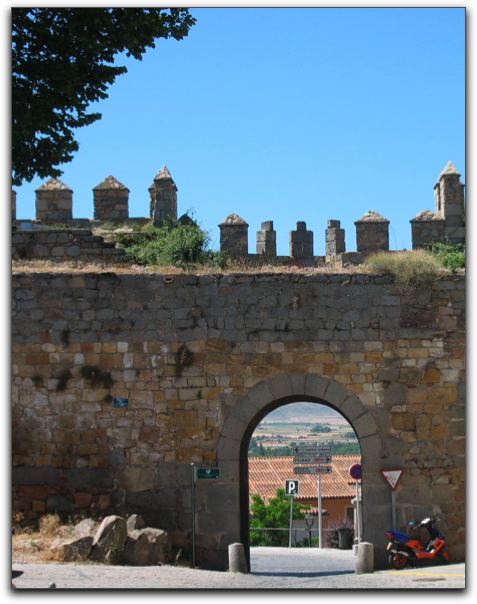
Of course the scooter and the signs weren’t there, nor the new apartment buildings.
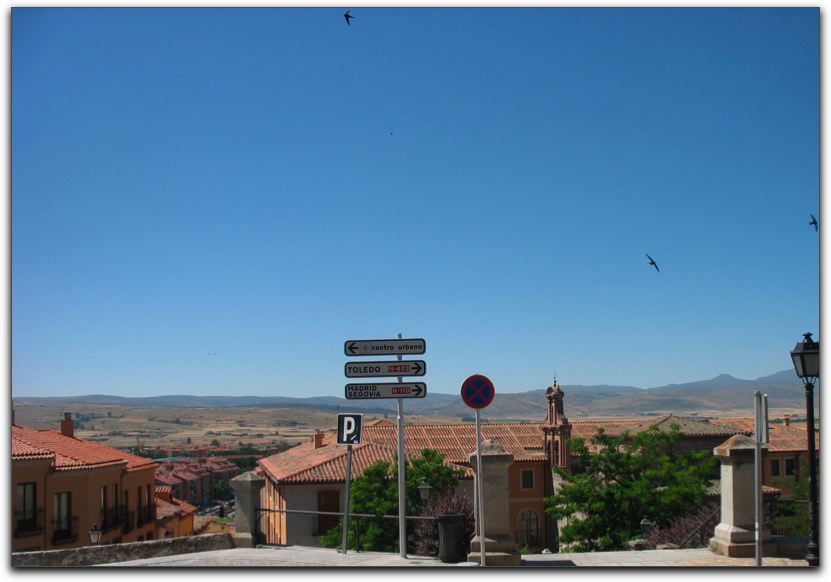
They may have walked to the river below, with the hills and mountains in the distance and the big city of Toledo off to the left beyond them. And then, coming home at the end of an adventure in the wilderness or fields,
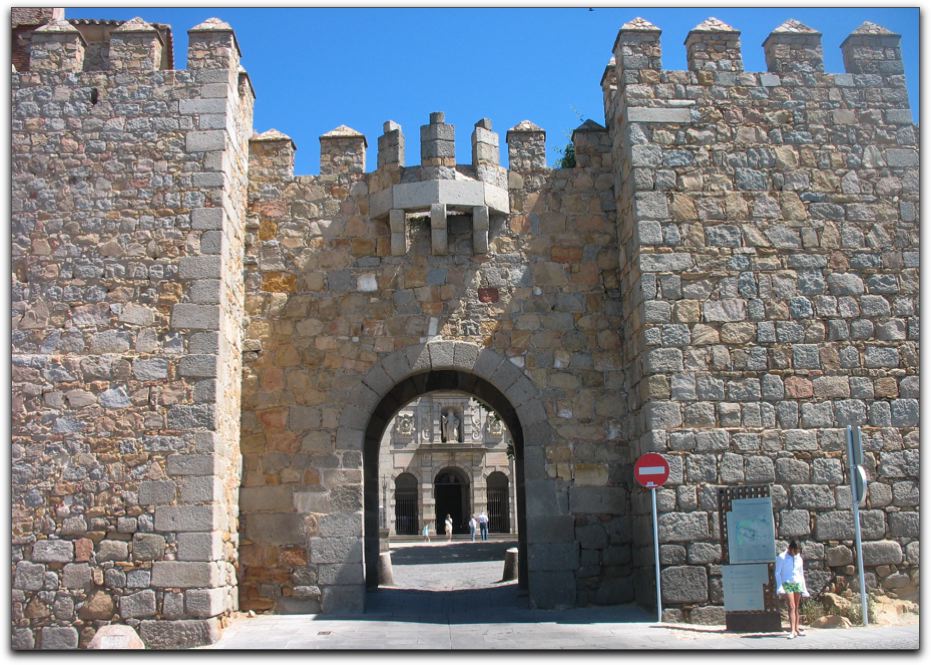
with whom did she share her insights? And, how did they respond to her?
…and Tomás, the Grand Inquisitor's burial place
Along the outer edge of the walls a road leads from this gate (in the center of the south wall)
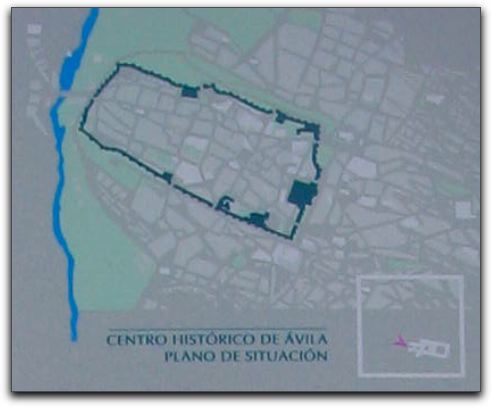
past the Center for the Interpretation of Mysticism (following the lead of Therésa)

down the hill to a monastery that, at the time, must have seemed far outside the city. As a sign at the site indicates:
This monastery was founded on the last will of Núñez Arnalte, treasurer to Queen Isabel. The Catholic Monarchs chose it as the burial place of their only male son and heir, the prince Don Juan de las Españas. The monastic whole is made up of the church, three cloisters and the royal hospice.
We arrived during siesta and could not go in and explore. Mark was able, however, to take a photo where The Grand Inquisitor would have spent his last years.
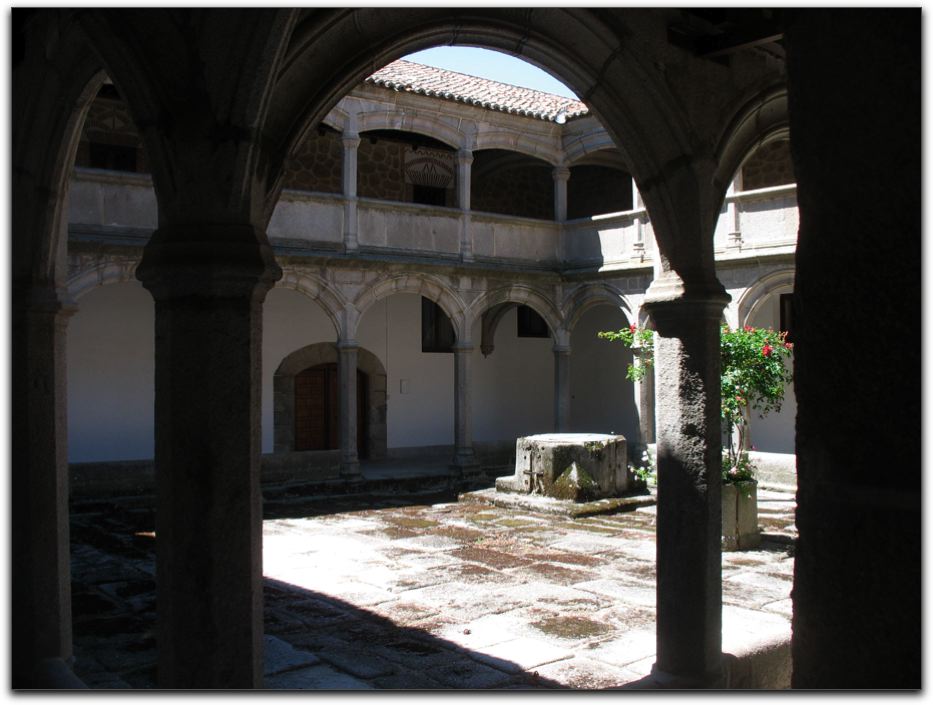
It is hard not to feel relief that, though hundreds of years have passed, we rabbis were able to visit this place.
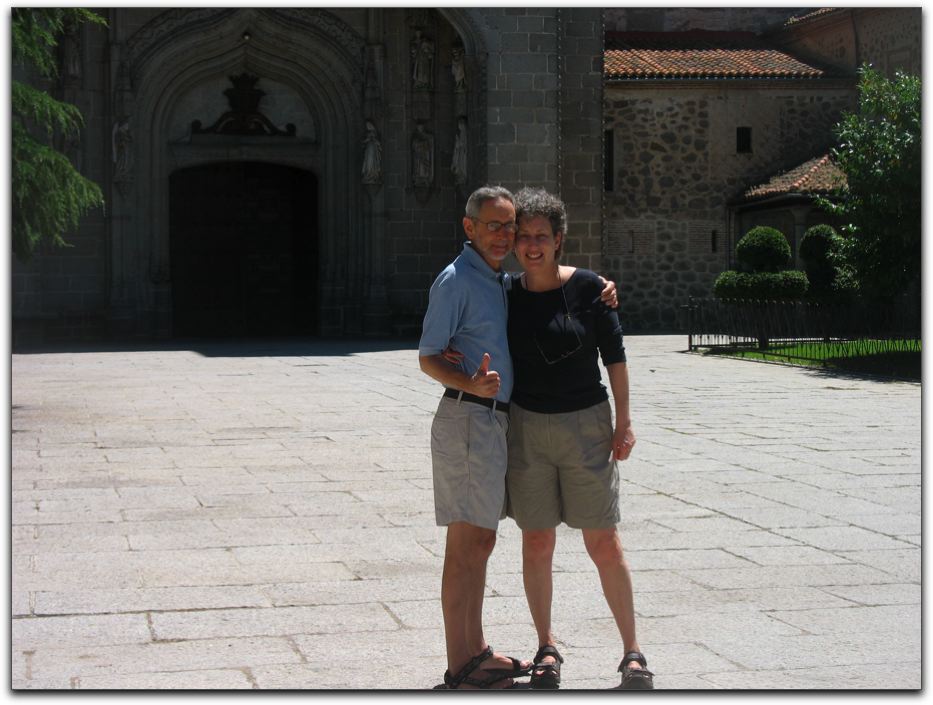
We returned to the old walled city, climed the ramparts, walked along them to find some beautiful and fascinating things.
- This sign indicates that Jews also participated in building the city:
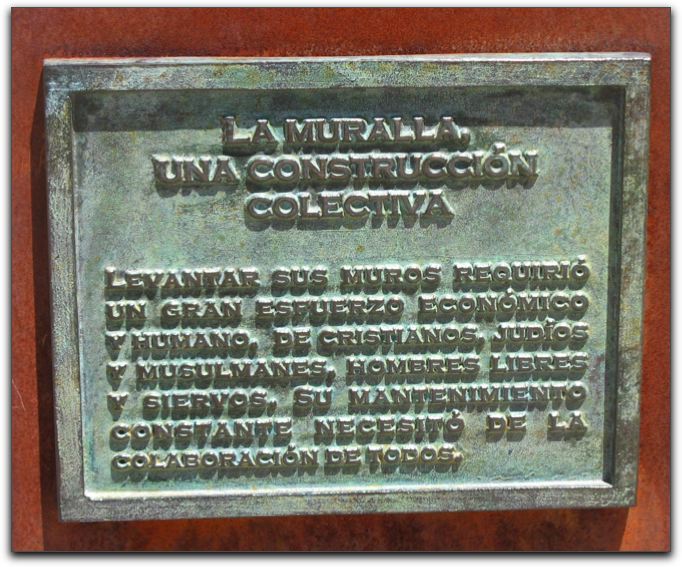
- The crenelations offered a number of wonderful angles for photographs
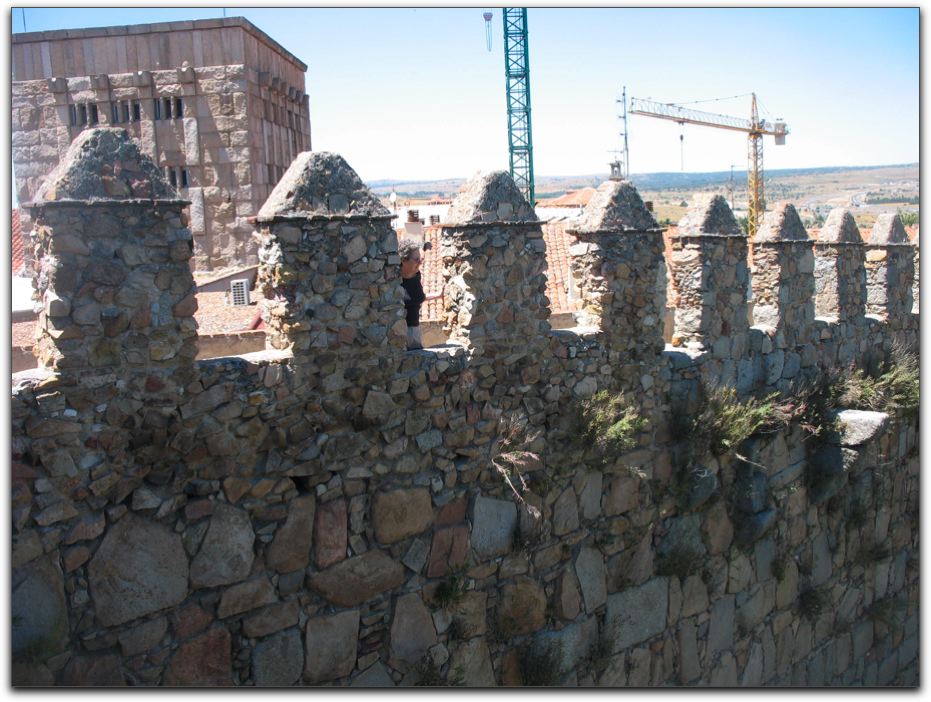
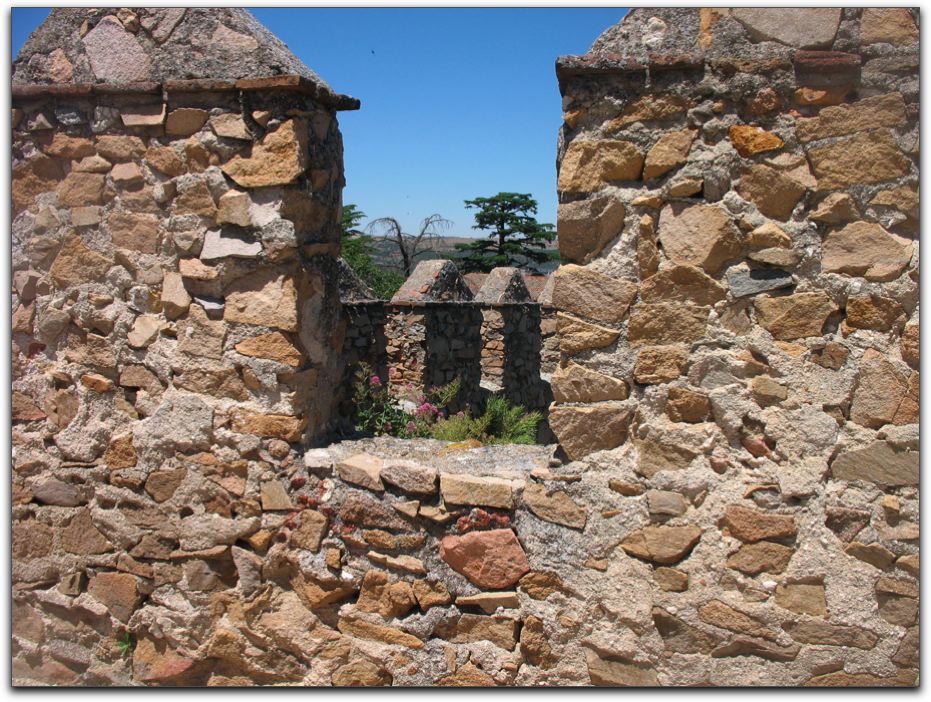
- Some of the roofs of the buildings that hugged the wall had collected so much dust and decomposed organic matter that they had begun to sprout life on their own.
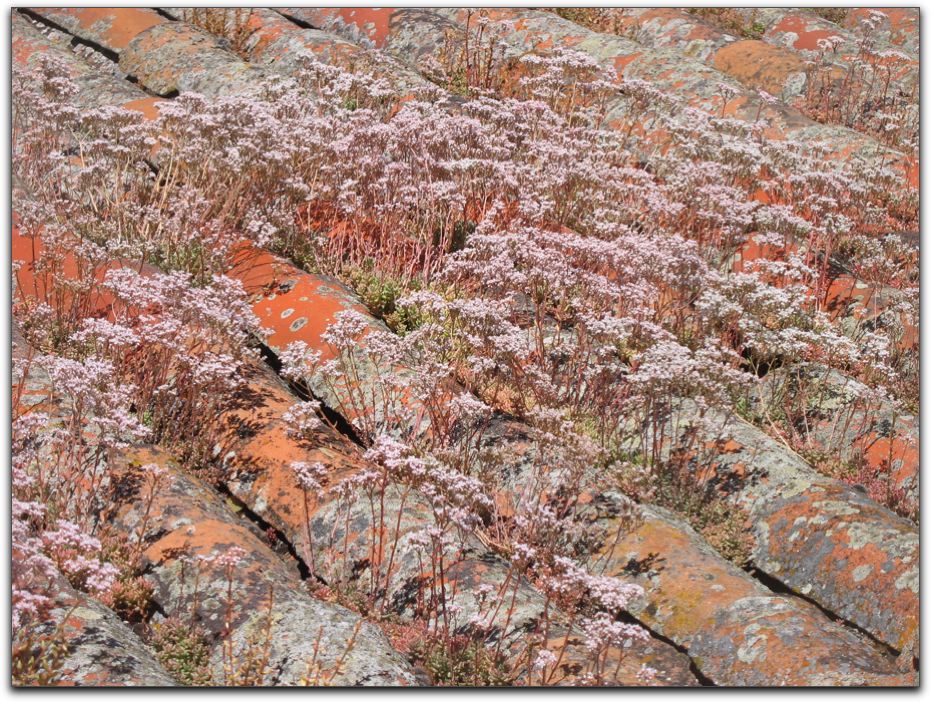
- Even then, late in the summer, the red poppies could still be found… in the strangest of places, this time, in the cracks between the rocks of the wall.

We returned to our van, left the city for an "overlook" nearby where we took our portrait for that day and ate our lunch then drove off to Toledo.
start || back || next



























